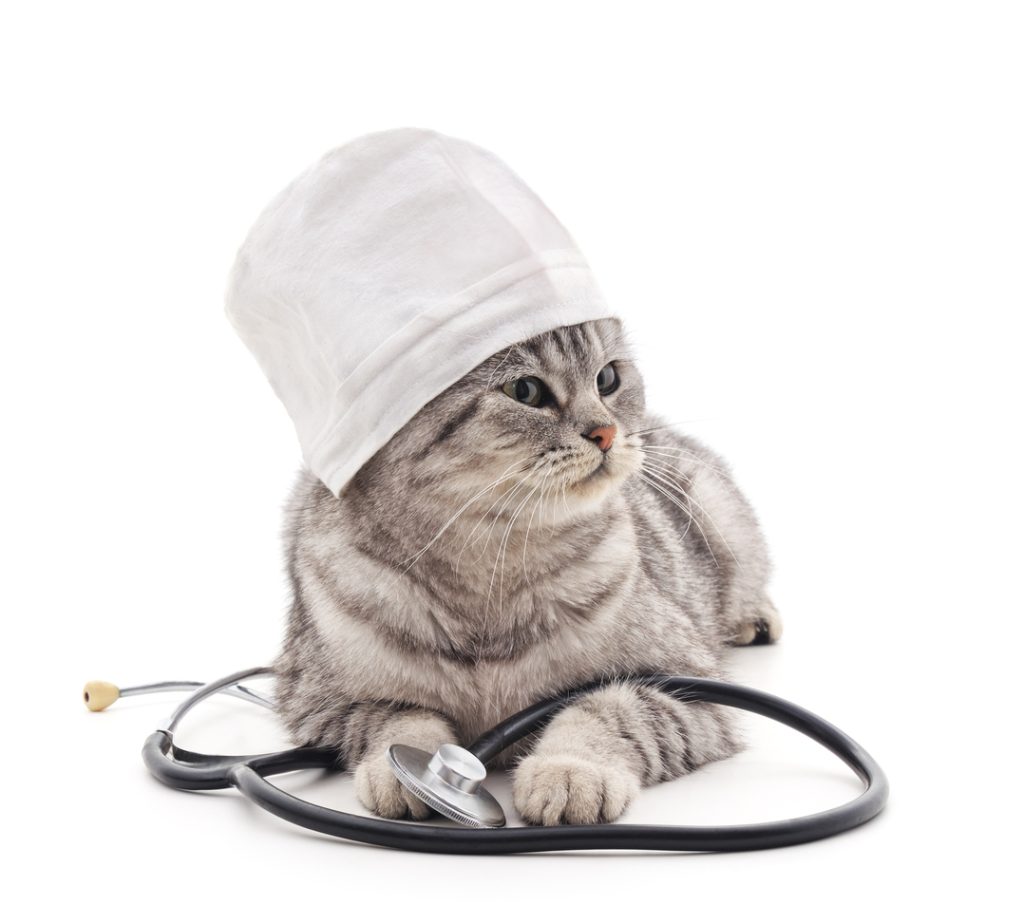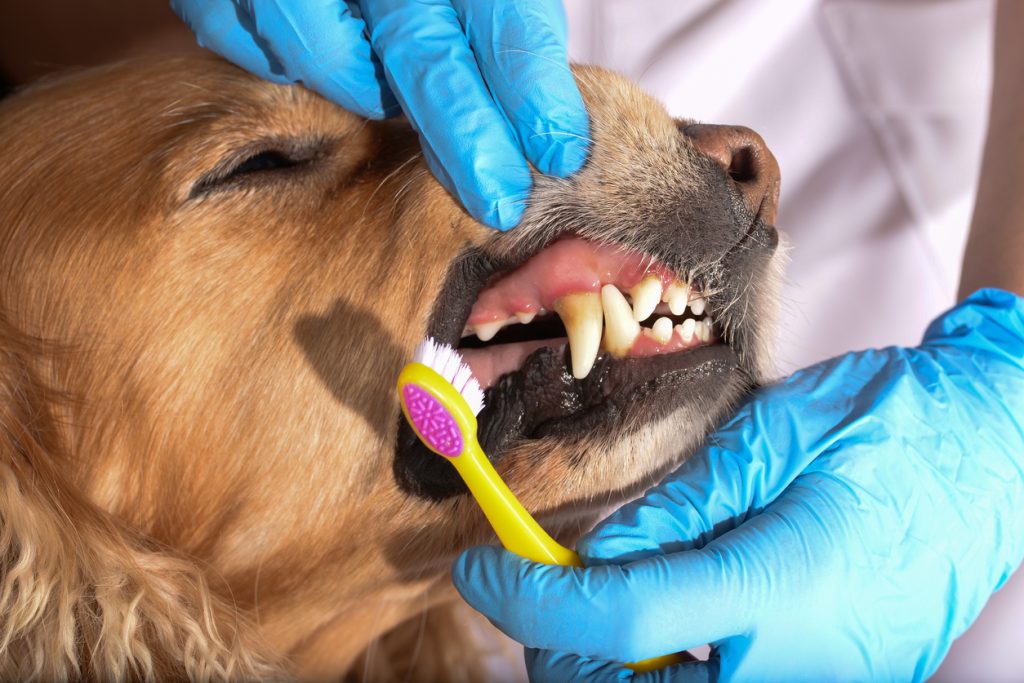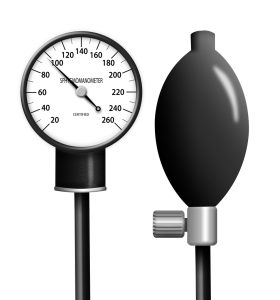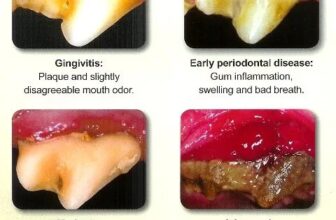Heart disease in dogs

One of the scariest factors almost never considered in feeding our dogs (and cats) is the risk of periodontal disease as a precursor to heart disease.
You may feed kibble, or you may evangelise human grade BARF products made of meat, organs, and ground bone, but *shocking fact* none of these address underlying causes of periodontal disease.
In fact, if you don’t address whatever diet you feed, it is quite possible your dog will be at risk of heart disease, or a plethora of other diet-related illnesses.
In this article we’ll take a good look at heart disease in dogs, with preventative tips to prevent such an illness occurring in later years.
Heart disease in dogs 101

Heart disease sneaks up on our pets and most of the time it isn’t until your cat or dog is in heart failure that physical changes are visible.
Signs of heart disease are generally related to a reduced function of the heart. The heart has to work harder and harder over time and without treatment the heart starts to fail.
Regular check ups at the vet help detect any changes in the heart. On examination, we the vet may hear a murmur (abnormal blood flow) or an arrhythmia (irregular rhythm). These may be a reason to perform more tests such as x-rays, ultrasound, and an ECG.
Being able to recognise some of the early signs of heart disease at home can also make a big difference to your pet. This allows early medical intervention and can help give your pet the best opportunity for a longer and healthier life.
If you find your dog is suffering heart disease the good news is there are a wide range of medications available to help. These medications can keep the heart disease under control and help your pet live a longer and near normal life.
As with any health condition we should always assess diet. Many dogs are fed a diet testament to junk food, and if you’ve read some of the reviews on this website you’ll know how potentially damaging they may be to pet health. Heart disease is no exception, neither is dental disease as a root cause.
Symptoms of heart disease in dogs
Signs of heart disease to look out for at home:
- Coughing, especially at night or after lying down.
- Laboured or fast breathing (an increased SRR – see below).
- A reluctance to exercise and tiring more easily on walks.
- An enlarged abdomen.
- Weight loss or poor appetite.
- Weakness or fainting associated with exercise.
A glaring oversight
In the introduction I mentioned a *shocking fact* which I consider one of the most fundamental and overlooked precursors to heart disease and other diet-related illnesses.
Pet food marketing tells us kibble cleans teeth, or dental treats clean teeth, or other products clean teeth. Perhaps in some cases there is marginal truth, but do they really work?
There’s a growing trend in BARF dog foods (Biologically Appropriate Raw Foods), with top end offerings being human grade meat, offal, and ground bone.
These are arguably worse in terms of avoiding heart disease, as are wet foods and fresh food diets.
None of these diets address dental health in dogs (or cats), and all can lead to plaque build up, dental disease, and later heart disease.
Have a look at your dog’s teeth. Are they yellow and stained? Is there plaque? A younger dog may still have white teeth, but how long will this last on the diet they’re fed?
A healthy mouth for a happy heart
Improving the condition of your pet’s teeth can lead to a healthier heart.
There is plenty of evidence dental disease is linked to heart disease, not only in our pets, but for us as well.
Here’s how it works…
Plaque and tartar build up on the teeth leading to infection of the gums. Bacteria from this infection travel in the blood stream around the body, and this bacteria can cause infections in organs such as the heart. This commonly occurs in the heart’s lining and valves and is known as endocarditis.
It’s not just the heart that can be impacted by an unhealthy mouth. The kidneys, liver and lungs are also at risk.

The good news is that many of these problems can be reversed if dental disease is resolved and dental hygiene is improved.
If dental disease and rot is advanced in your dog, be prepared for them to have teeth removed. This may sound cruel, but even with most teeth removed a dog will adapt, and it will likely be the best way forward for their health.
Top tips to prevent dental disease
There are numerous ways to prevent dental disease or reduce the impact if it’s already prevalent:
- Get your dog’s mouth checked regularly by a vet – they will likely pick up on problems early.
- Get your dog eating the correct diet. If this is a kibble, ensure it is a good standard formulated with an emphasis on prey ingredients rather than grains, legumes, or starches. Consider alternative diets as well, with many Australian dog foods pushing the boundaries.
- Brush your dog’s teeth. Many vets consider this a gold standard – just be sure to use a pet approved toothpaste.
- Regularly check your dog’s teeth. Lift the lip and have a smell. If you notice any yellowing of the teeth or redness of the gums OR your pet’s breath is a bit smelly, book in with your vet.
I’ll add one more preventative measure every dog owner should consider, and likely the most effective method of all:
- Raw meaty bones. Ever wondered why predator animals in the wild have such clean teeth? This is why.
If in doubt, check in with your vet once a year for a health check and dental check. Regular checks protect your dog’s overall health, can save costs when a problem is found early, and can be life saving!
What’s your pet’s SRR?
SRR is an acronym for your pet’s sleeping respiratory rate.
The SRR is a very powerful tool that you, the pet owner can undertake in your own home. It can help detect the onset of/or improve the monitoring of left sided congestive heart failure (CHF) in both dogs and cats.
Many of the common heart diseases lead to left sided congestive heart failure. When pressure in the top left heart chamber increases and blood backs up into vessels within the lung, it results in blood accumulating in the lungs. This fluid, referred to as pulmonary oedema, causes an increase in your pet’s respiratory rate.
How do you monitor sleeping respiratory rate?
- The measurement should be done when your pet is asleep in a normal environment (not too cold, not too hot).
- Repeat the measurement over 2-3 days (to get a baseline variation), and then ongoing monitoring should happen once or twice a week.
- Normal SRR in dogs and cats is less than 30 breaths per minute, often in the high teens or low 20s.
When to seek veterinary advice?
If your pet has an underlying heart disease and their SRR is consistently greater than 30 breaths per minute, your pet could be developing congestive heart failure and you should seek veterinary advice as soon as possible.
It’s important to note an elevated SRR can sometimes be caused by high blood pressure, anaemia, pneumonia, heat stress, or a fever, so a veterinary check up is always warranted.
If you are ever worried about your pet you should ask your vet for advice.
High blood pressure
For some pets, measuring their blood pressure is essential for a more thorough veterinary examination. An elevation in blood pressure (or hypertension) can indicate an underlying disease and if left undetected, can cause damage to organs and in some cases, be life threatening.
Blood pressure is the force created by the blood flowing through the body’s blood vessels. An increase in resistance in these vessels can cause an increase in blood pressure. This increased resistance is generally caused by an underlying disease.
Cats often develop high blood pressure secondary to diseases such as hyperthyroidism or kidney disease while dogs may suffer from high blood pressure secondary to endocrine diseases such as Cushing’s disease.
Your pet’s blood pressure will usually be measured using a fancy piece of equipment (such as a doppler). It is essential that the correct size cuff is used on your pet’s leg or tail for accurate results. Multiple measurements will also need to be taken to achieve an average reading.
As stress can affect the readings, measuring blood pressure in a veterinary consult can sometimes be difficult! A elevation of blood pressure due to stress is often referred to as ‘white coat syndrome’ and it is therefore important that we take things slowly during the measurement process.
If your pet is diagnosed with high blood pressure it is essential the underlying disease is treated. Repeat blood pressure measurements may be required every 1-3 months depending on the response to treatment.
In some cases it may be necessary to give your pet medication to help lower blood pressure and reduce any potential side effects associated with the hypertension.
You should always ask your vet if you are worried or have any concerns about your pet. They are here to help and can give you the most up to date information.
If you think your pet might have a problem with their heart, call your vet today.
“Heart disease in dogs”, written by David D’Angelo.

Join the Reddit community r/HealthyAussiePets







